Blog
Exploring the Paradigm Shift of Experience Level Agreement-based Contracting and its Impact on Enterprises

Experience level agreements (XLAs) can foster service provider innovation and collaboration if structured with rewards for risks. While once a potent force, the XLA has lost its power as enterprises have transitioned to a penalty-only model, essentially reducing it to a standard service level agreement (SLA). Delve into the ramifications of this change and the potential dangers it poses to enterprises in this blog.
“Employee experience is critical to the success of any organization. Companies that prioritize employee experience see higher employee engagement, lower turnover rates, and improved business outcomes.” — CIO of a Fortune 500 company
|
41 % Enterprises have identified improving EX as the top objective of workplace transformation1 |
Undeniably, experience holds immense power and significantly influences business operations. The introduction of the Experience Level Agreement (XLA) (refer to exhibit 1) offers a method to quantify and subsequently enhance intangible aspects such as Employee Experience (EX), capturing the interest of businesses and senior stakeholders worldwide.
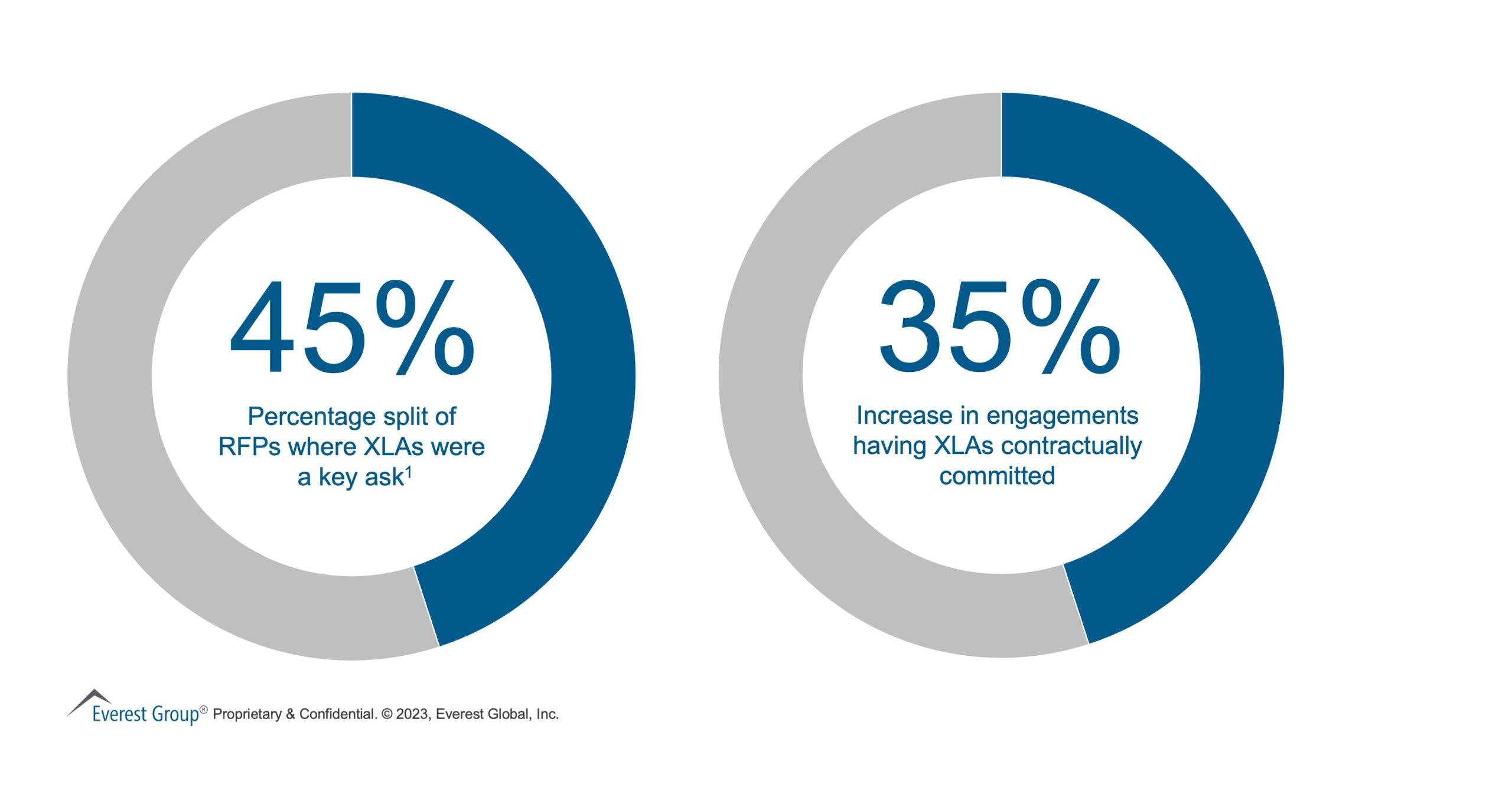
Nonetheless, recent trends suggest that the way enterprises approach XLAs has notably shifted, moving from a risk-reward model to a penalty-only one. The full implications of this change seem to be lost on enterprises. In this blog, we will delve into this shifting approach to XLAs, discuss the associated risks, and clarify why, before making this decision, enterprises should err on the side of caution.
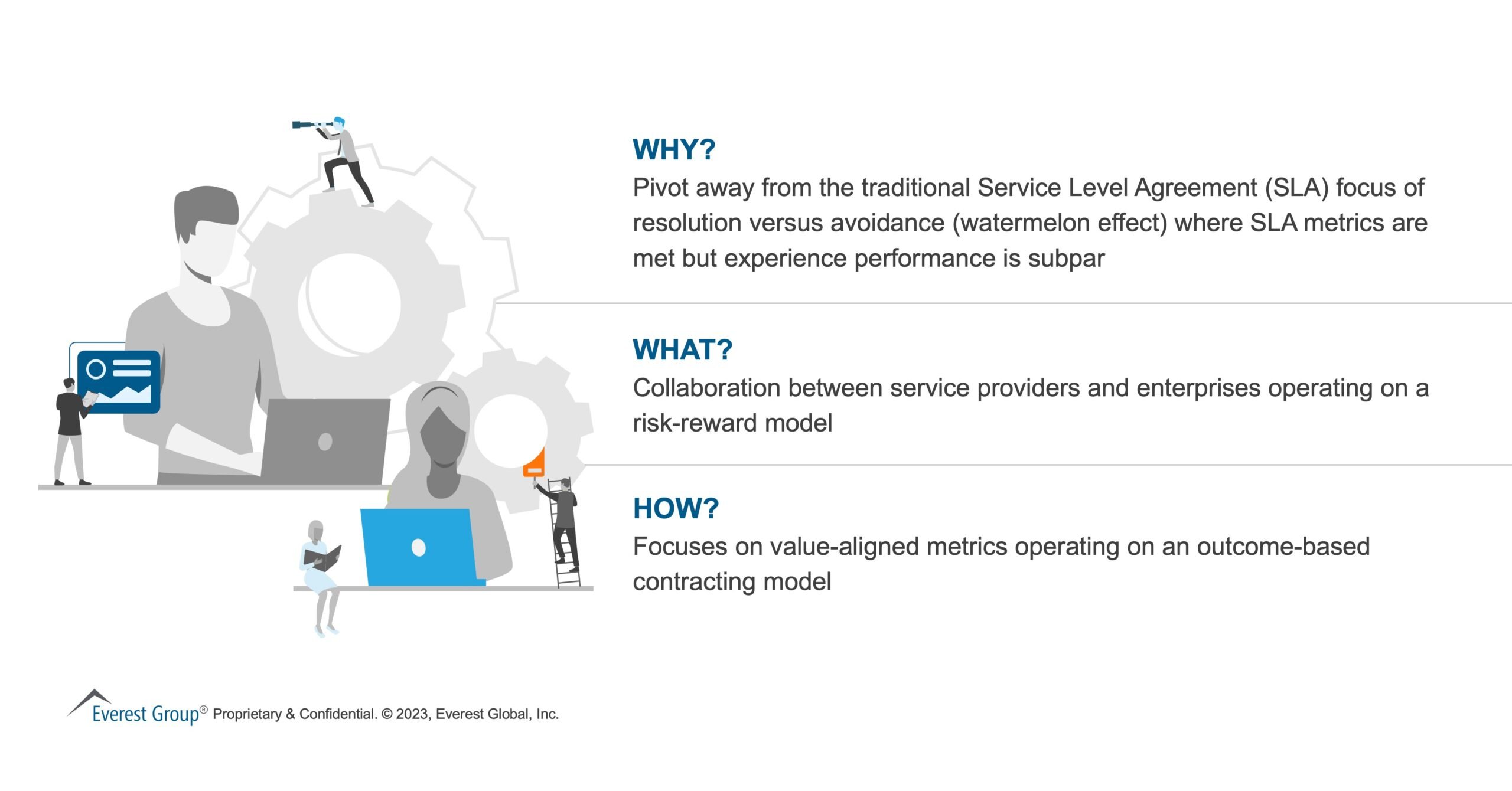
Deciphering the Significance of an Experience Level Agreement: Navigating the distinction between SLAs and XLAs
Recently, there has been some uncertainty about the role of XLAs, with suggestions that they might replace SLAs or represent its next evolutionary phase. It is important to clarify that XLAs are not intended to replace SLAs but rather to complement them. Understanding the differences between the two, as presented below, is critical.
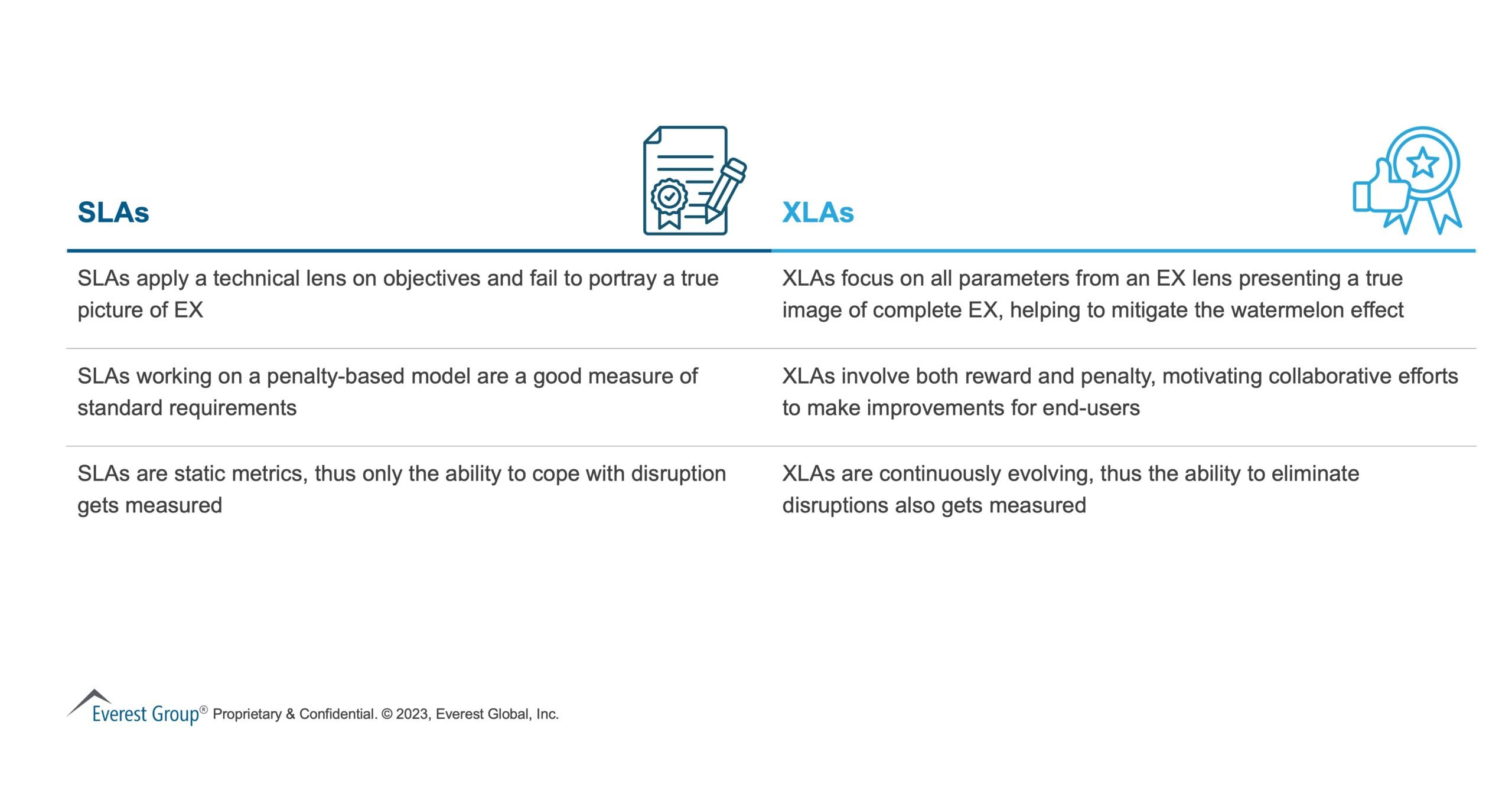
Demonstrating the intended version of XLA-based contracting
Before the introduction of XLAs, experience was pursued on a best-effort basis, with no means of measurement. However, now with enterprises contractually committing to XLAs, it placed the onus on SPs to take ownership of the user experience and actively seek avenues for improvement.
By formally incorporating XLAs into contracts, both enterprises and SPs established well-defined roles and responsibilities, fostering a collaborative partnership with mutual advantages.
Initially, XLAs operated under a risk-reward framework (refer to Exhibit 2), providing SPs with strong incentives to exceed predetermined performance standards. Penalties for non-compliance motivated SPs to improve service quality, ultimately benefiting enterprises. Furthermore, enterprises had the authority to impose penalties.
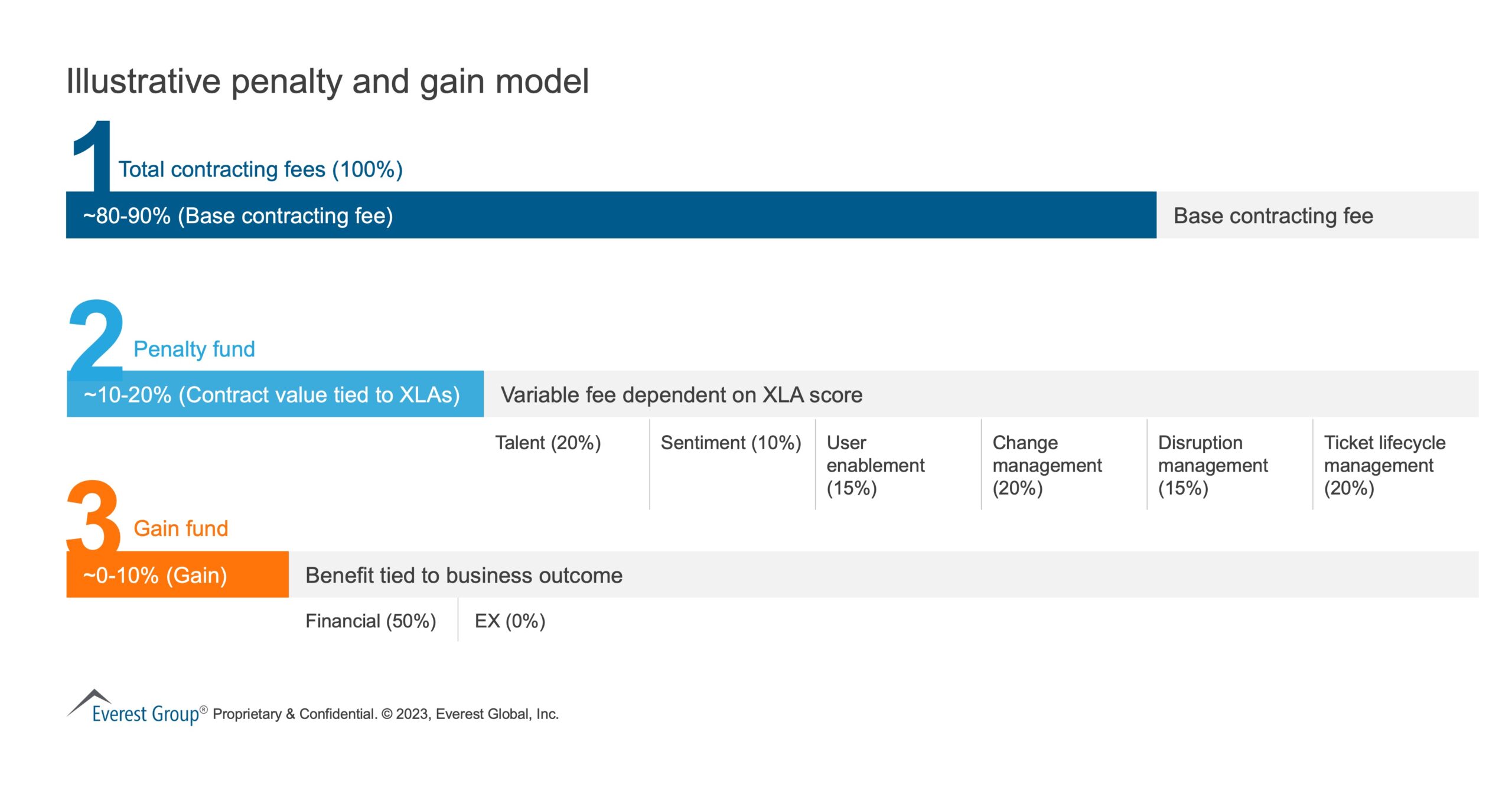
The current landscape of the Experience Level Agreement risk-reward model approach
This risk-reward model seemed to be the ideal path for both enterprises and SPs to follow. However, macroeconomic factors and a heightened cost-saving focus led enterprises to push for a penalty-only XLA model to save costs.
While SPs were hesitant, they ultimately agreed to this model. This has created the scenario where SPs are offering penalty-only XLA contracting by default for all digital workplace deals.
However, SPs diluted the XLA-based contracting construct by accepting lenient performance benchmarks and minimal penalties, eliminating their motivation to work beyond the agreed-upon baseline benchmarks. Additionally, SPs began templatizing XLAs, inadvertently diluting their fundamental intent and purpose.
The change in XLA contracts has ultimately led to a pyrrhic victory for enterprises. Although they might have succeeded in eliminating rewards in the short term, overall employee experience and innovation may suffer in the long term.
In essence, this has now become dangerous for enterprises, as illustrated below:
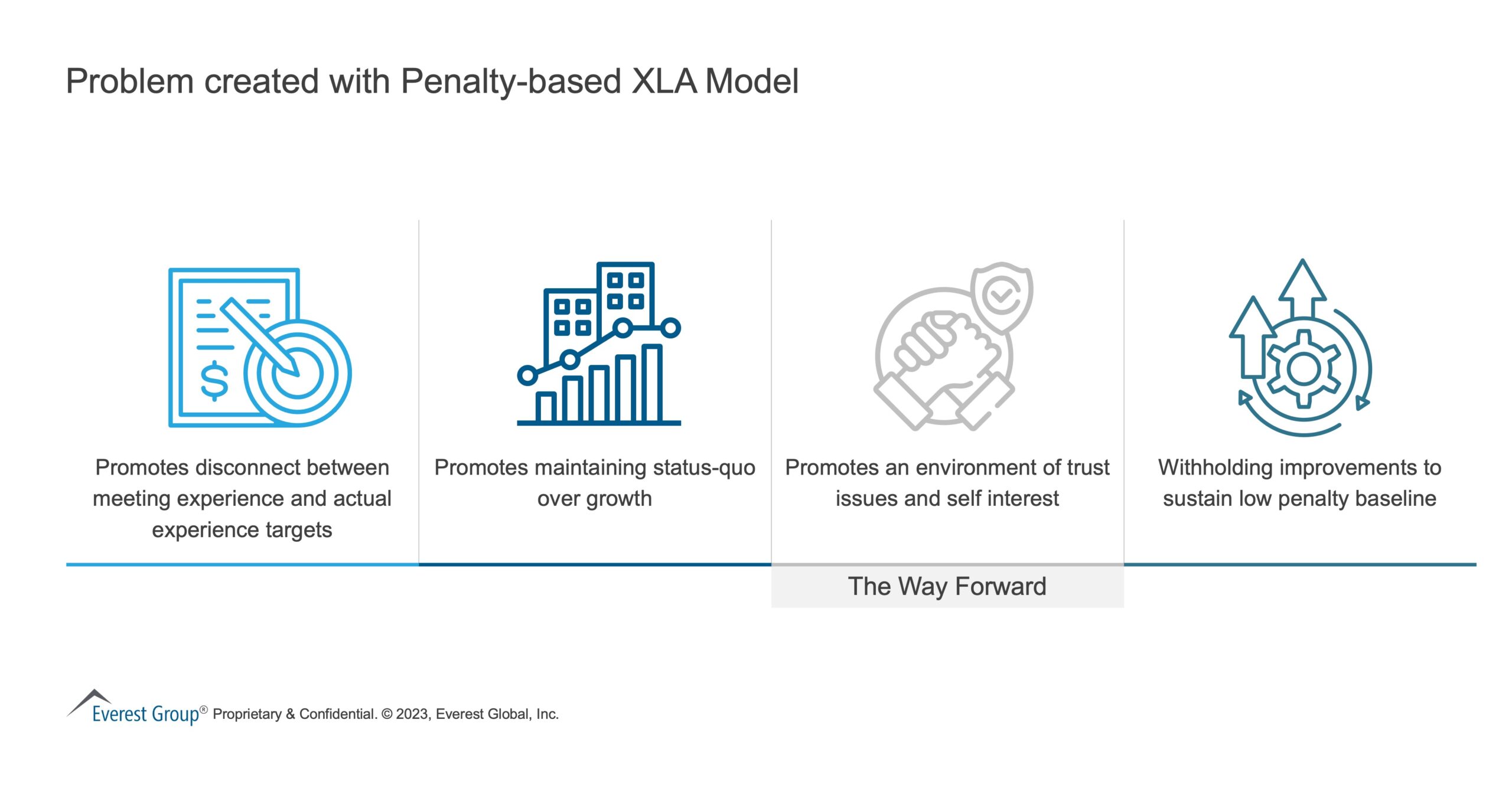
The way forward
This shift in approach diminished a once powerful tool in the hands of the enterprises, reducing XLAs into just another SLA, transforming a mutually beneficial partnership for growth into an environment fostering mediocrity.
Hence, enterprises must exercise caution in their approach towards XLAs. Instead of viewing XLAs as a means to cut costs or penalize providers, they should view them as a collaborative avenue for fostering innovation and driving growth.
Everest Group will continue to follow the evolution of the experience level agreement. To discuss your XLA journey or for help within an XLA co-creation workshop, please reach out to [email protected] and [email protected].
See our webinar, Forward-looking Sourcing for 2024: Outsourcing, Location, and Pricing Strategies in APAC, for 2024 outsourcing portfolio strategies.